Train stations are more than just transit hubs; they are historical landmarks, embodying unique architectural beauty and profound cultural stories. In Vietnam, alongside modern stations, these enduring “witnesses” stand tall, offering visitors a chance to admire their vintage charm and experience a slower pace of life. Let’s explore these operating vintage train stations where the past and present harmoniously converge.
Da Lat Railway Station: “The Most Beautiful Station in Indochina”
Da Lat Railway Station, located on Quang Trung Street, Ward 10, is known as “the most beautiful station in Indochina.” Built in 1932, this station showcases French architectural style, with soft, graceful lines reminiscent of the stilt houses of the Central Highlands.
 Exterior view of Da Lat Railway Station with its French colonial architecture.
Exterior view of Da Lat Railway Station with its French colonial architecture.
Initially, Da Lat station served the Da Lat – Phan Rang railway line but ceased operations in 1972. Today, the station is a popular tourist destination, attracting visitors with its antique beauty and romantic atmosphere. Here, you can freely take photos of its unique architecture, explore vintage train carriages, and learn about the history of Vietnam’s railway industry.
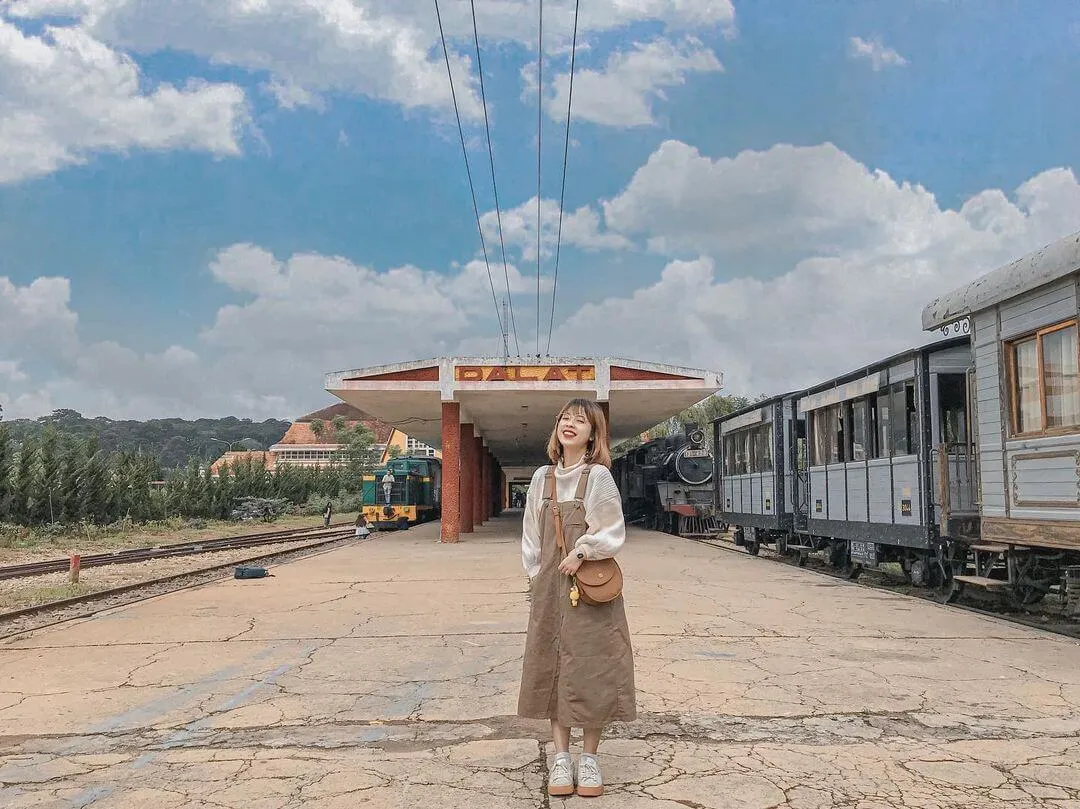
One of the most exciting experiences at Da Lat station is taking a train ride on the short route to Trai Mat. This route takes passengers through winding mountain passes, offering stunning views of Da Lat’s natural scenery. Round-trip tickets range from 100,000 to 150,000 VND.
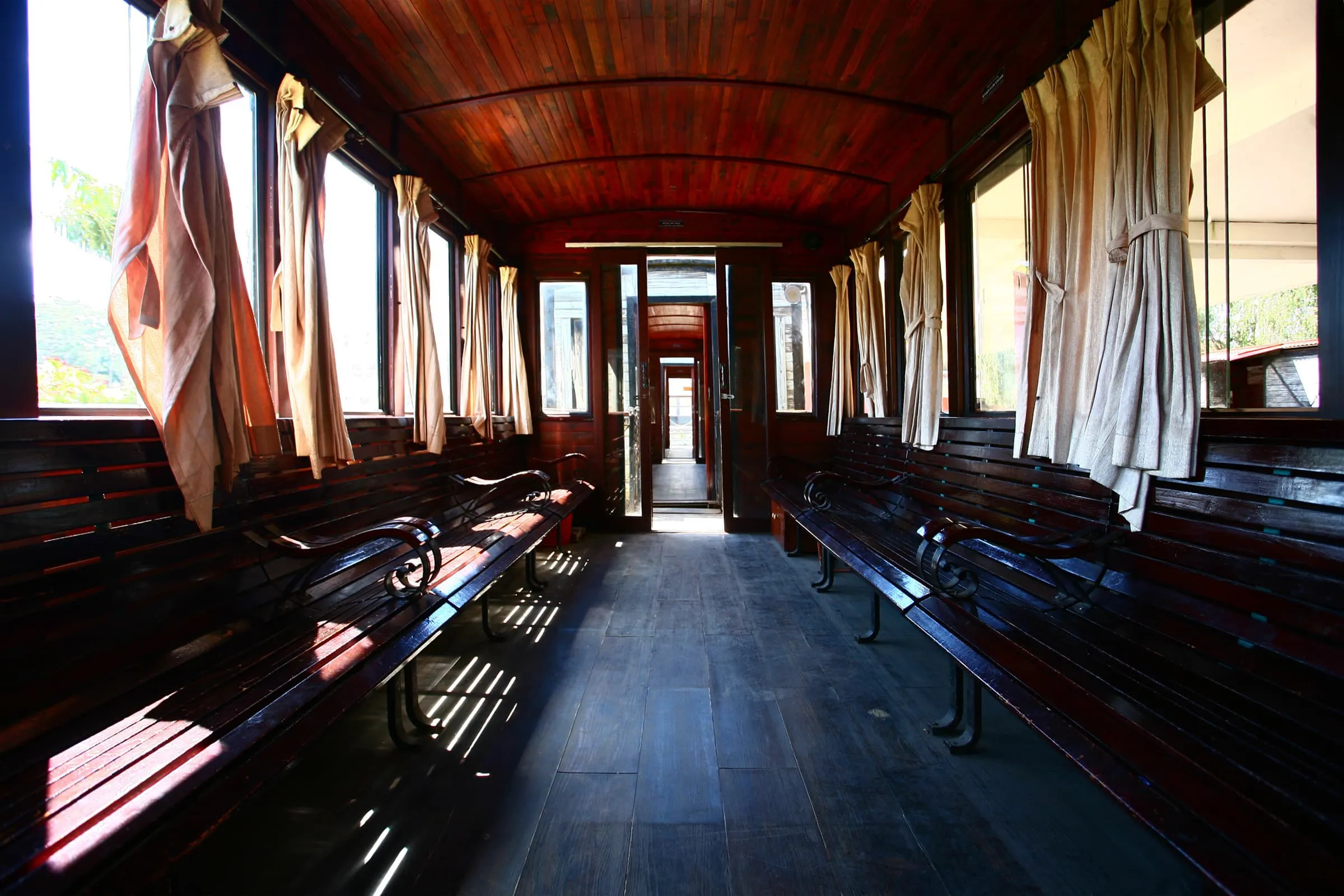
Additionally, inside Da Lat station, there is a charming cafe where you can enjoy delicious drinks and relax in a cozy atmosphere. This cafe is also an ideal check-in spot for those who love classic beauty.
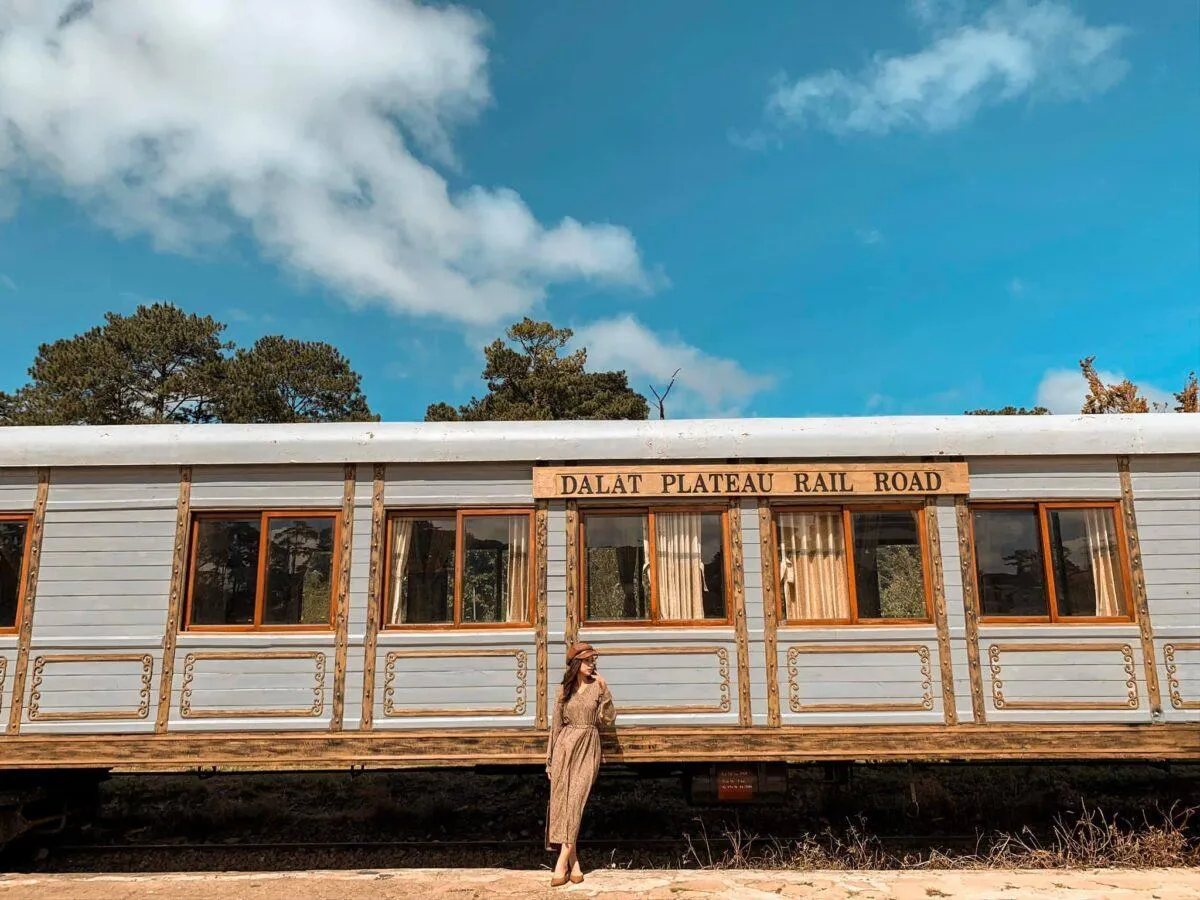
Hanoi Railway Station: A Historical Witness in the Capital
Hanoi Railway Station, also known as Hang Co Station, located on Le Duan Street, Dong Da District, is one of Vietnam’s largest and most important stations. Built in 1902, Hanoi Station has witnessed many ups and downs of the nation’s history.

With its classic French architecture, Hanoi Station evokes a sense of nostalgia for a bygone era. Despite numerous renovations, the station still retains its distinctive architectural features, creating a space that is both vintage and modern.

Hanoi Station has 3 floors, with the ground floor serving as the ticket and passenger reception area, the second floor for technical departments, and the third floor for administrative offices. Behind the building is the marshalling area for locomotives and the North-South railway tracks.

When visiting Hanoi Station, tourists can take souvenir photos with the vintage building or explore the station’s interior to feel the bustling pace of the capital. When taking photos, please maintain order and avoid affecting other passengers.

Hue Railway Station: The Romantic Beauty of the Ancient Capital
Hue Railway Station, located on Nguyen Tri Phuong Street, is a unique architectural artwork of the ancient capital. Built from 1881 to 1885, this station features European architectural style with a dominant pink color, creating a romantic and charming beauty.
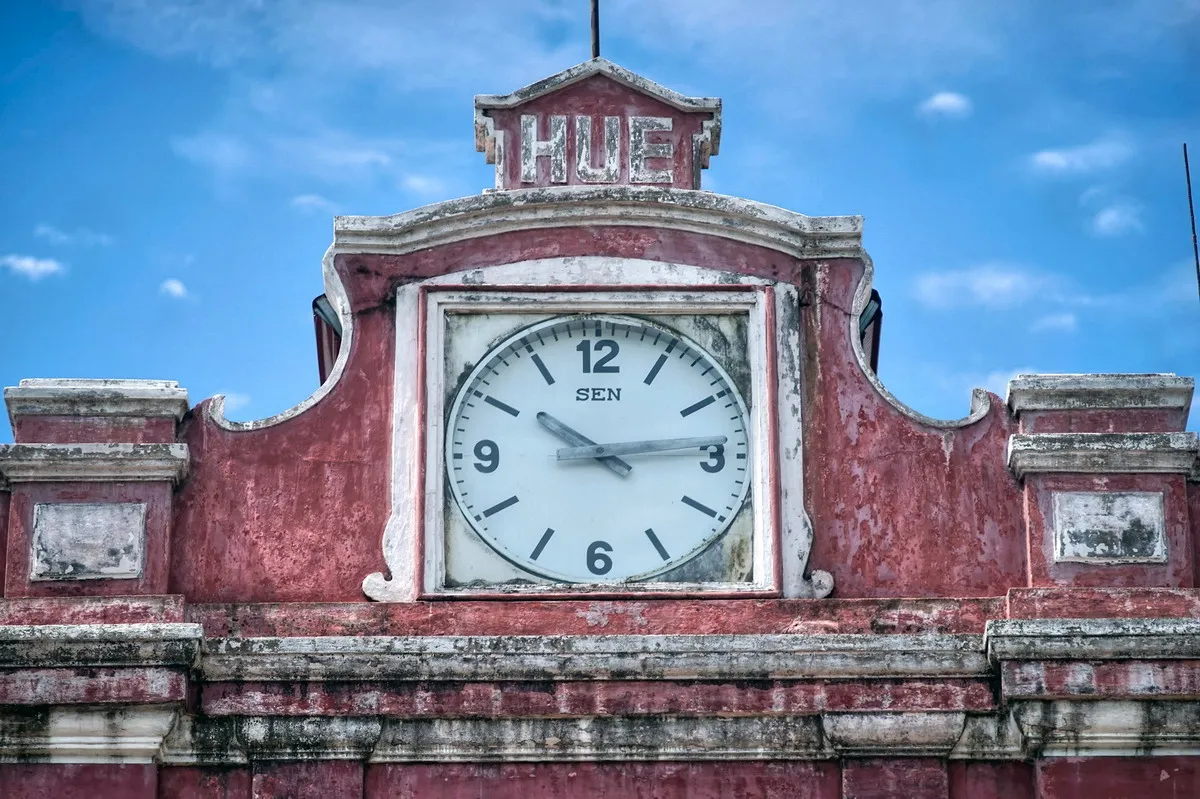
From the outside, Hue Station impresses with its sophisticated architectural lines, soft arched windows, and an antique clock on top of the station. All of these create a classic, elegant space that captivates every gaze.
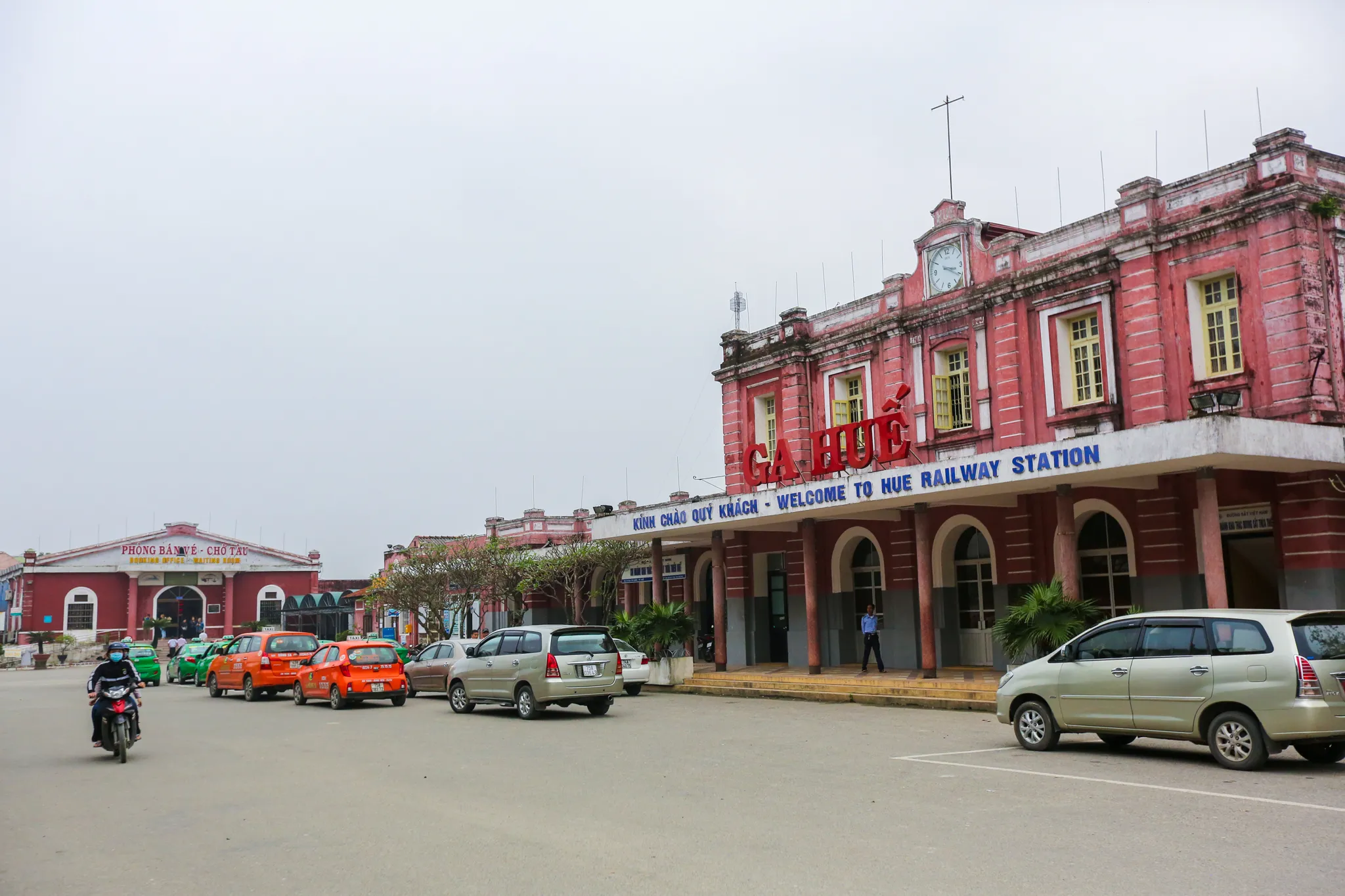
More than just a vintage station, Hue Station is associated with many historical events and famous figures. This place was the inspiration for the poem “Shadows on the Station Platform” by poet Nguyen Binh, a famous work of the New Poetry movement.

Hue Station has also welcomed important historical figures such as Charlie Chaplin, Cambodian King Sihanouk, and French writer André Malraux. When visiting Hue, don’t forget to stop by this train station to take commemorative photos and feel the historical beauty of the ancient capital.
“Witnesses” of Time
Vintage train stations like Da Lat, Hanoi, and Hue are not only beautiful architectural structures but also “witnesses” of time, carrying profound historical and cultural stories. Visiting these stations allows you to admire their antique beauty, slow down, feel the peaceful rhythm of life, and learn about the nation’s glorious past.
Plan a trip to explore these vintage train stations, and you will have memorable experiences of a Vietnam that is both modern and traditional.